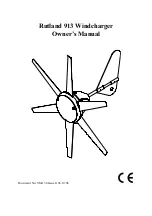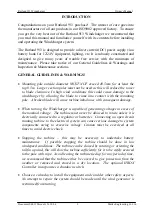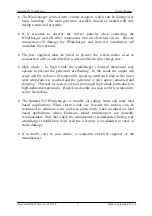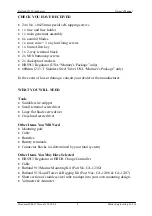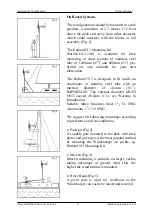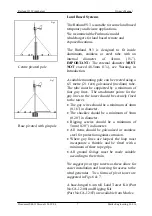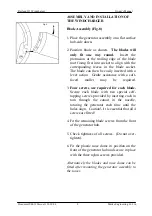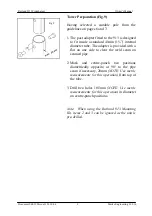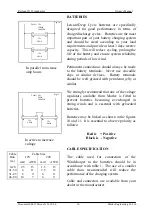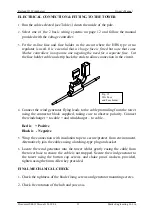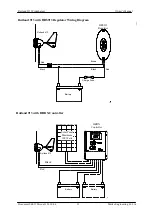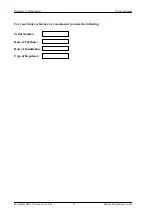
Rutland 913 Windcharger
Owner’s Manual
Document SM-130 Issue G 26.10.06
3
Marlec Engineering Co Ltd
•
The Windcharger is fitted with ceramic magnets, which can be damaged by
heavy handling. The main generator assembly should be treated with care
during transit and assembly.
•
It is essential to observe the correct polarity when connecting the
Windcharger and all other components into an electrical circuit. Reverse
connection will damage the Windcharger and incorrect installation will
invalidate
the
warranty.
•
The fuse supplied must be fitted to protect the system unless used in
conjunction with a controller that is already fitted with a charge fuse.
•
High winds – in high winds the windcharger’s built-in thermostat may
operate to prevent the generator overheating. In this mode the output will
cease and the turbine will temporarily speed up until such time as the lower
level temperature is reached and the generator is once again connected and
charging. This may be seen to cycle in prolonged high winds particularly in
high ambient temperatures. If safely accessible you may prefer to temporarily
secure the turbine.
•
The Rutland 913 Windcharger is suitable for sailing boats and some land
based applications. When storm winds are forecast the turbine can be
restrained to minimise wear and tear particularly when installed on land
based applications where Furlmatic model windchargers are normally
recommended. Note that where the manufacturer recommends a furling type
windcharger should have been used the warranty is invalidated in cases of
storm damage.
•
If in doubt, refer to your dealer, a competent electrical engineer or the
manufacturer.

